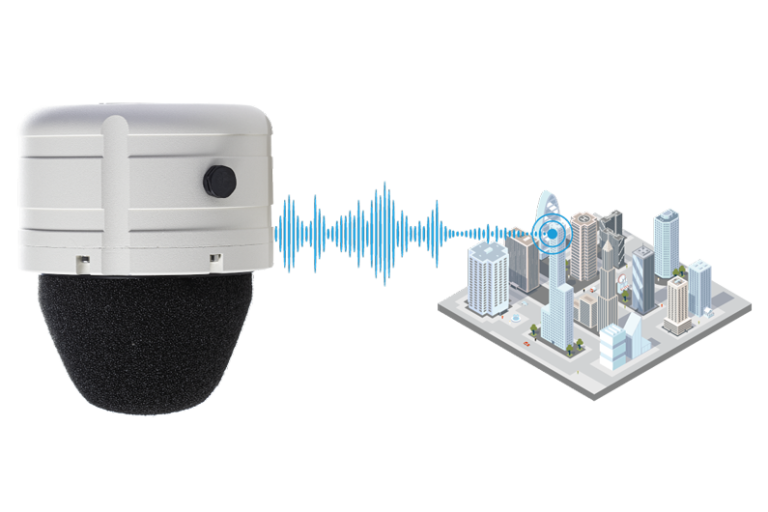
Our relationship with sound: the role noise plays in our lives
This year has brought about profound changes to the planet, with a pandemic that has affected billions of people, businesses and the environment. What was normal pre-COVID-19 will likely not be normal again for years, possibly decades to come. The way people interact with each other, the way industries operate, how public spaces are designed, and how noises and sounds are naturally or artificially shaped to create ambience and atmosphere will likely reflect variations we are currently making to our lives.
The lockdowns in various countries have resulted in changing sound patterns, especially in larger cities. Gone is the constant hum of vehicles – replaced with the sounds of birds chirping or leaves rustling. In cafes, the familiar sound of clinking spoons, expresso machines frothing milk, laughter and conversation is now somewhat muted. People are noticing sounds they have never heard before – or learning to adjust to a new concept for some – virtual silence. Post lockdown we have become more conscious of our soundscape and how it can affect our mood and behaviour.

If a tree falls in the forest, and there’s nobody there to hear it, does it make a sound ?
When we hear sounds, our auditory system processes them and allows us to perceive or experience them – making sounds and noise subjective. What appeals to some may repel others. What soothes and calms, may be distracting and intolerable for someone else. In many ways, how we perceive noise as individuals and as a collective is determined by cultural norms and human conditioning.
The sound of sport
Sport is an interesting analogy for life when it comes to the way we process noise, and 2020 has certainly been a year that has brought about significant changes and unexpected outcomes. The link between sport and noise may seem tenuous, but sport actually has a complex, co-dependent relationship with noise.
This year, as professional sports have slowly returned, they are physically, mentally and sound-wise very different. We may have always taken for granted the role that crowd noise plays in the enjoyment of a sport – from the perspective of both the viewer and the participant.

For the elite athlete in a sport like football (soccer), high volume crowd noise, singing and chanting motivate and boost the adrenalin that drives him or her to perform at their highest level. Players have trained and been conditioned to participating in loud settings and tend to thrive when immersed in a soundscape that reverberates throughout a stadium. Perhaps the fact that it is a team sport lends itself more toward communication and verbal interaction. Take that noise away, like we have in 2020, and athletes are forced to adjust their concentration and learn how to play under totally new conditions.
For the audience at home, watching the game on television or online – often on their own or with another family member – broadcasters have already factored in the necessity of crowd noise to build atmosphere. Simulated crowd noise and cheering is added to the broadcast and even in its artificial form, noise remains an essential component of the remote football experience. If you didn’t actually see that the stadium was empty, you might never know the difference. The tactic keeps audiences engaged and committed.
When designing arenas and stadiums, acoustic engineers will always look at the best ways to optimise sound within the internal space while minimising reverberation and noise for surrounding homes and businesses. It is a delicate balance between ensuring audio is easily audible throughout the stadium and the sound of the crowd is either toned up or down depending on the circumstances.
At the other end of the sporting spectrum is tennis. Loud noise or interaction from spectators is largely frowned upon. Sound limitation and control are considered particularly important to players to aid in their focus and concentration. The call for silence is made so often that the umpire’s voice is often the only sound you will hear, along with physical hitting of the ball – unless of course the player is a grunter and then he or she becomes synonymous with that sound as a style of performance. Acoustic design is so integral in a tennis stadium that even a single voice shouting out within a crowd of thousands, will be instantly audible to all.

Why noise monitoring matters ?
When designing and planning enclosed or internal spaces, like stadiums, each project begins with specialised planners and environmental consultants identifying what noises will be present, anticipated volume levels and simulations of crowd size. All the defined data is input into forecasting models to inform the overall design, use of materials and audio systems. Ongoing monitoring of sound and vibration provides the best way to measure, control and manipulate noise to serve the required purpose – dialling up the sound volume for a goal, dialling it down for a national anthem for example.
In industrial, mining, construction and commercial applications, monitoring needs will be considerably different – often less about ambience and enjoyment and more about meeting government regulations and communicating transparently with those potentially impacted. But the way that noise is shaped will also determine how people communicate with each other on site, what protective gear they might need and how long they can be exposed.
Outdoor public spaces are far less predictable when it comes to planning the effect of noise on people’s use of the area or the ambience created. Historically cities were not designed to factor in the impact of excessive noise, but today, sounds – both good and bad – can influence people’s decision making when it comes to where to live, where to work, where to send kids to school and how they interact with shared spaces. In quiet neighbourhoods and suburban areas, every noise event is amplified and residents’ reactions to those noises will likely be more alarming.
When experienced in short bursts, a stadium crowd of football fans will emit decibels of a similar level to an aircraft taking off. When we are in that stadium at that electric moment, that sound is what we may look forward to most – we celebrate it. If we had to live next door to that sound every day, it is doubtful we would feel the same way.
To manage and plan effectively for traffic management in a city you must have the right data to build a long-term assessment plan. This can only be achieved accurately by monitoring sound and vibration levels in various areas. An analysis of the data allows planners to make decisions regarding possible intervention strategies, the need to remove cars or restrict access to create more ambient pedestrian zones.
Around construction sites, monitoring allows us to control excessive noise pollution and ensure regulatory compliance with acceptable standards. At airports, aircraft noise needs to be monitored and managed not only for surrounding communities, but also for airport workers, indoors and out, who may be adversely affected by long-term exposure. The process of continuous improvement needs to be based on a combination of objective data and testimonials/feedback from those impacted – which makes up the subjective data.

What makes the ACOEM approach different?
Acoem has been researching, developing and redefining noise and vibration monitoring technology for more than 40 years through its 01dB and Metravib brands. Its solutions don’t aim to silence spaces, but rather to shape the soundscape, using accurate predictive data to maintain ambience under a variety of situations. Working with acoustic and environmental consultants, our equipment and software help to optimise the heard environment and minimise or control what is considered noise pollution.
When used effectively and intuitively, monitoring can also provide an added sense of security to indicate anomalies and alert us of deviations to what would be considered normal in a specific soundscape. Acoem’s Acoustic Threat Detection (ATD) solution takes sound and vibration to a new level, giving cities and public spaces the ability to use a combination of sound and sight as a risk management tool. ATD modules can be installed to pinpoint incidences of sound disturbance and distinguish their origin and source. The detection of abnormal behaviour, gunshots or explosions in real-time gives people the chance to react, intervene and possibly even save lives.
“Noise is part of our daily life but we need to protect ourselves and others from excessive exposure,” says Acoem Noise & Vibration Business Leader, Kévin Cormier. “We understand that every customer is looking at a specific solution to meet their own requirements and what works for one application, may not be successful in another. They can be as different as football and tennis,” he added. “Listening to our customers and gaining an understanding of what they need allows us to design the right noise and vibration monitoring solution every time.”
When experienced in short bursts, a stadium crowd of football fans will emit decibels of a similar level to an aircraft taking off. When we are in that stadium at that electric moment, that sound is what we may look forward to most – we celebrate it. If we had to live next door to that sound every day, it is doubtful we would feel the same way.
To manage and plan effectively for traffic management in a city you must have the right data to build a long-term assessment plan. This can only be achieved accurately by monitoring sound and vibration levels in various areas. An analysis of the data allows planners to make decisions regarding possible intervention strategies, the need to remove cars or restrict access to create more ambient pedestrian zones.
Around construction sites, monitoring allows us to control excessive noise pollution and ensure regulatory compliance with acceptable standards. At airports, aircraft noise needs to be monitored and managed not only for surrounding communities, but also for airport workers, indoors and out, who may be adversely affected by long-term exposure. The process of continuous improvement needs to be based on a combination of objective data and testimonials/feedback from those impacted – which makes up the subjective data.
Want to know more?
If you would like more information about Acoem smart noise and vibration monitoring and how we can tailor solutions to your specific needs, please contact us.
Would you like to…?





